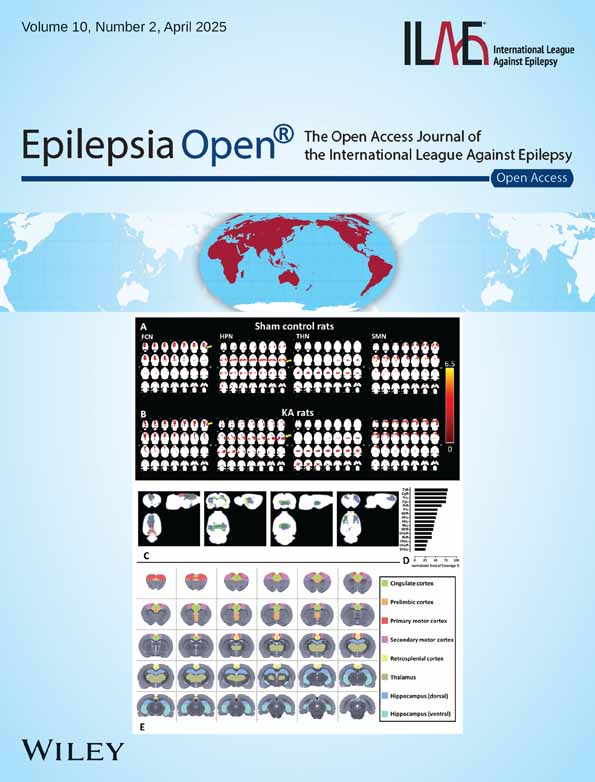Predictive value of electrographic neonatal seizures for later epilepsy: A call for a broader perspective
Abstract
This is a letter to the editor commenting on a recently published study on electrographic seizures as predictors of epilepsy in neonates with encephalopathy. The letter highlights potential overemphasis on electrographic neonatal seizures, underscores the importance of severely abnormal EEG backgrounds and advanced neuroimaging, and suggests incorporating genetic analyses for a more comprehensive understanding.
I am writing to share my observations regarding the recently published paper on the role of electrographic seizures in predicting later epilepsy in neonates with neonatal encephalopathy.1 While the study addresses a critical topic, I believe its design and conclusions may overestimate the significance of electrographic neonatal seizures (ENS) as a predictor and overlook broader clinical contexts. I will aim to summarize my comments in the following points: (1) Overemphasis on electrographic neonatal seizures: the study identifies a significant association between ENS and later epilepsy (OR 6.6, 95% CI: 2.3–19.5) but highlights a severely abnormal EEG background as the strongest predictor (OR 52.5, 95% CI: 15.0–183.8). While ENS are relevant, severely abnormal EEG backgrounds are likely to reflect underlying structural abnormalities on MRI, which may serve as even stronger predictors. A multivariate analysis integrating these factors could provide a more balanced perspective. The findings from a recent study on MRI and short-term outcomes after acute provoked neonatal seizures further underscore the importance of MRI in identifying predictors of adverse outcomes.2 This study demonstrated that specific MRI abnormalities, such as cortical injury or injury to deep gray nuclei, are strongly associated with seizure burden and abnormal neurological outcomes at discharge. These results emphasize the role of advanced neuroimaging in contextualizing ENS within a broader framework of structural and functional impairments. (2) Lack of Detailed Etiological Analysis: infants are grouped into broad categories (HIE, stroke/ICH, sepsis/meningitis, and “other”), with HIE being predominant. However, limited granularity in analyzing severity and type of underlying etiologies restricts understanding of their differential impact on epilepsy. Detailed correlations between HIE severity, MRI findings, and outcomes would enhance applicability. (3) Insufficient Attention to Structural Lesions: all infants with epilepsy and imaging had structural abnormalities, yet MRI findings were classified only as “normal” or “abnormal.” This binary approach overlooks lesion characteristics like location, extent, and type, which are crucial for understanding epileptogenesis. A more nuanced MRI analysis could provide deeper insights. (4) Overlooking the Role of Genetic Investigations: the study spans a period from 2003 to 2019, which largely predates the widespread adoption of genetic testing in neonatal populations. It is important to note that the presence of HIE does not exclude the possibility of an underlying genetic etiology. Some cases of epilepsy attributed to HIE may, in fact, stem from genetic conditions. Future studies should integrate genetic analyses to provide a comprehensive understanding of the interplay between HIE, genetic factors, and epilepsy risk. (5) Integration of Evidence from the Newborn Electrographic Seizure Trial: findings from the randomized clinical trial by Hunt et al.3 provide additional context. This study compared outcomes in neonates treated for both clinical and electrographic seizures versus clinical seizures alone. Results showed no significant difference in mortality or severe disability at 2 years between groups, and cognitive outcomes were worse in those treated for electrographic seizures. These findings highlight the need for caution in emphasizing ENS treatment, particularly given the potential neurotoxicity of current anticonvulsants.
To address these limitations, I would emphasize the need to focus on detailed analyses of etiological subgroups, especially within HIE, to assess their specific contributions to epilepsy risk; implement advanced MRI classifications to evaluate lesion characteristics; incorporate genetic testing to better identify underlying etiologies; conduct systematic neurological evaluations during follow-up to contextualize epilepsy within broader neurological sequelae; perform multivariate analyses to integrate predictors and evaluate their combined effects. While the study offers valuable insights into epilepsy risk following neonatal encephalopathy, its design may misrepresent the broader clinical picture by overemphasizing ENS. The results of Hunt et al. further emphasize the need for a nuanced approach to treating neonatal seizures, balancing potential benefits against risks. Findings from advanced neuroimaging studies, such as those highlighted in the recent MRI-based research, support the integration of structural imaging in evaluating predictors of adverse outcomes and refining treatment strategies.
I hope these comments are received constructively and help advance research in this important field. Thank you for your attention, and I remain available for further discussion.
ACKNOWLEDGMENTS
LF has been supported by the Italian Ministry of Health with Current Research funds.
CONFLICT OF INTEREST STATEMENT
I confirm that I have read the Journal's position on issues involved in ethical publication and affirm that this report is consistent with those guidelines.
Open Research
DATA AVAILABILITY STATEMENT
Data sharing not applicable to this article as no datasets were generated or analysed during the current study.




